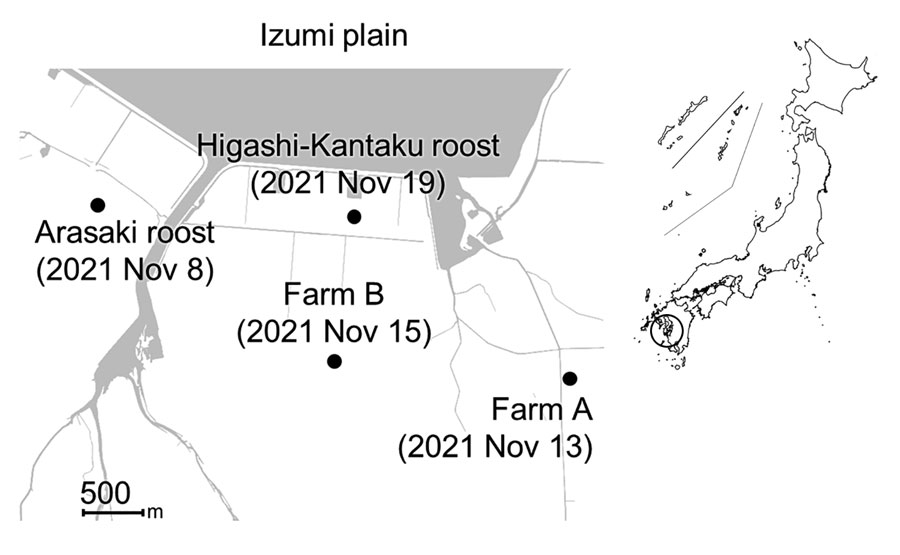Volume 28, Number 7—July 2022
Dispatch
Genetically Diverse Highly Pathogenic Avian Influenza A(H5N1/H5N8) Viruses among Wild Waterfowl and Domestic Poultry, Japan, 2021
Figure 1

Figure 1. Locations on the Izumi Plain, Japan, where highly pathogenic avian influenza A(H5N1/H5N8) viruses were detected among wild waterfowl roosts and domestic poultry farms, 2021. Dots indicate location and date of avian influenza A detection. Inset map shows location of Izumi Plain in Japan.
Page created: May 10, 2022
Page updated: June 18, 2022
Page reviewed: June 18, 2022
The conclusions, findings, and opinions expressed by authors contributing to this journal do not necessarily reflect the official position of the U.S. Department of Health and Human Services, the Public Health Service, the Centers for Disease Control and Prevention, or the authors' affiliated institutions. Use of trade names is for identification only and does not imply endorsement by any of the groups named above.